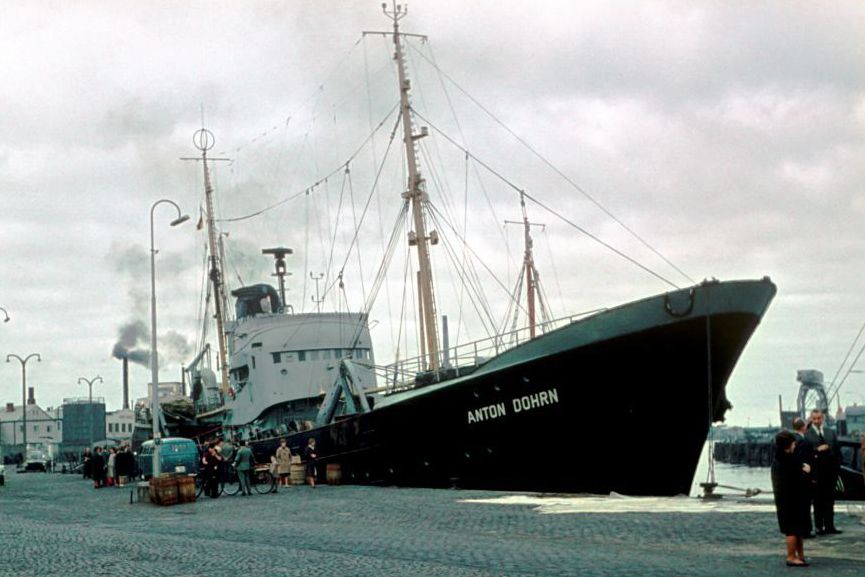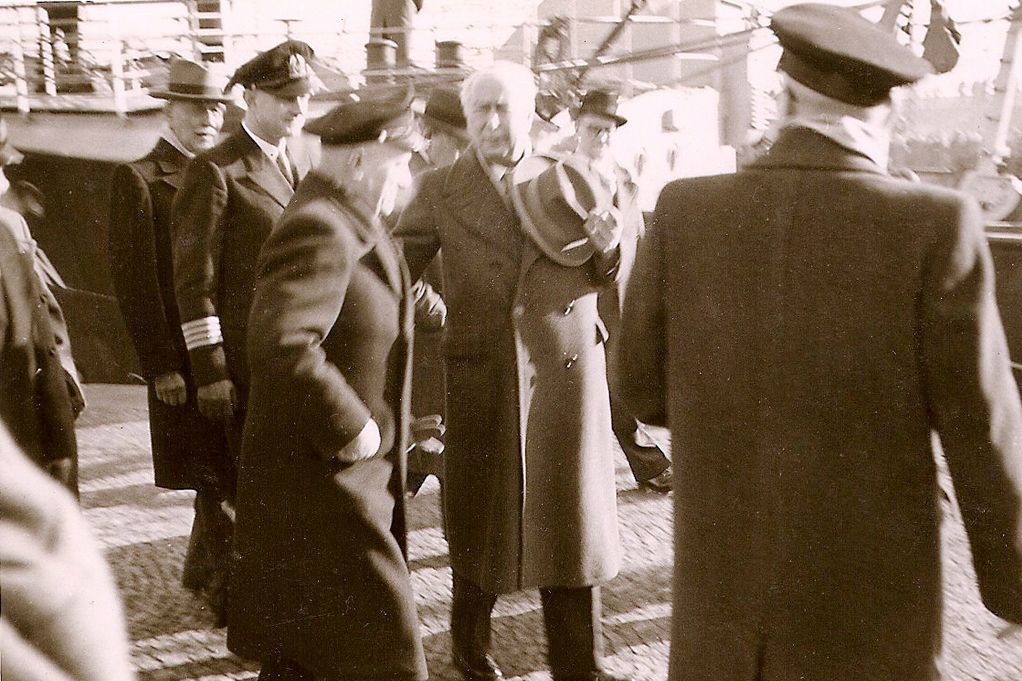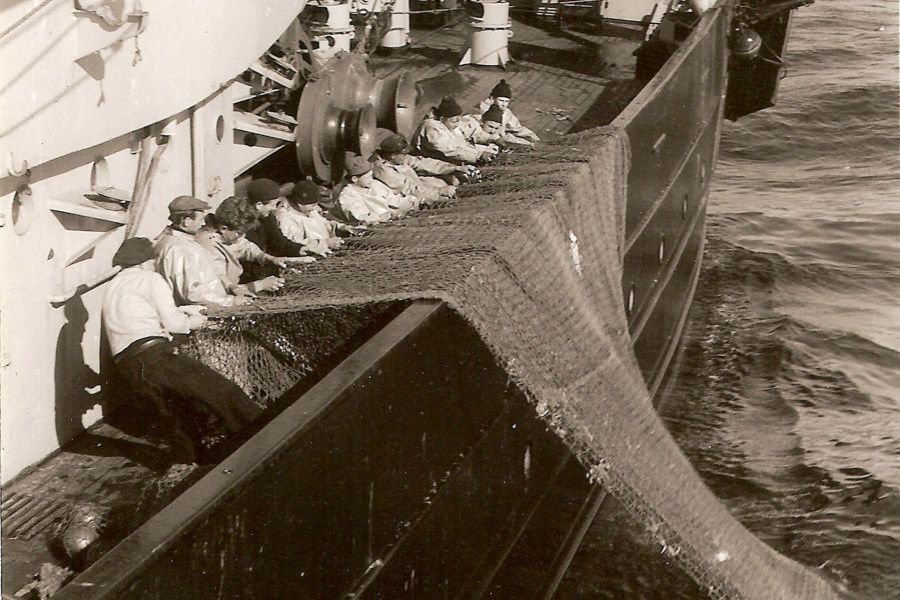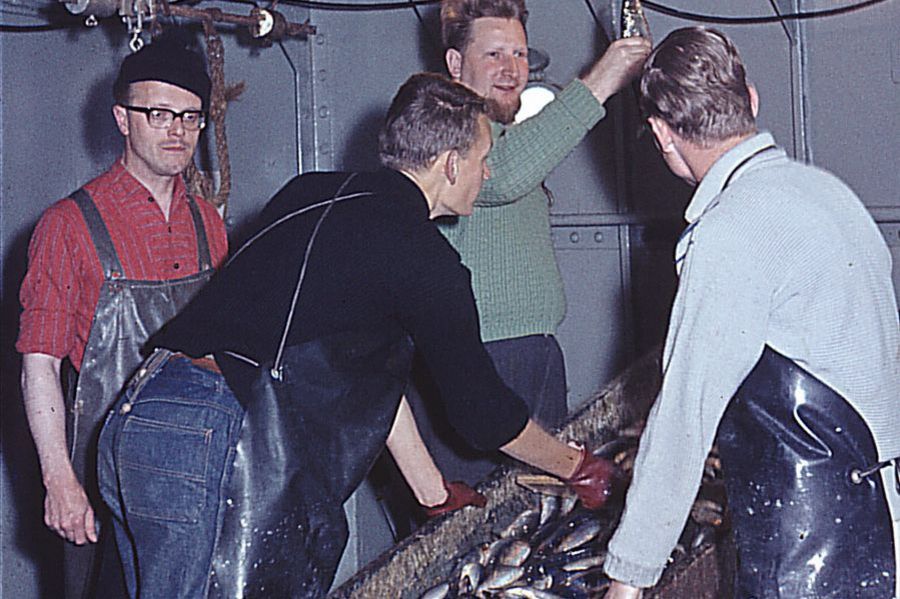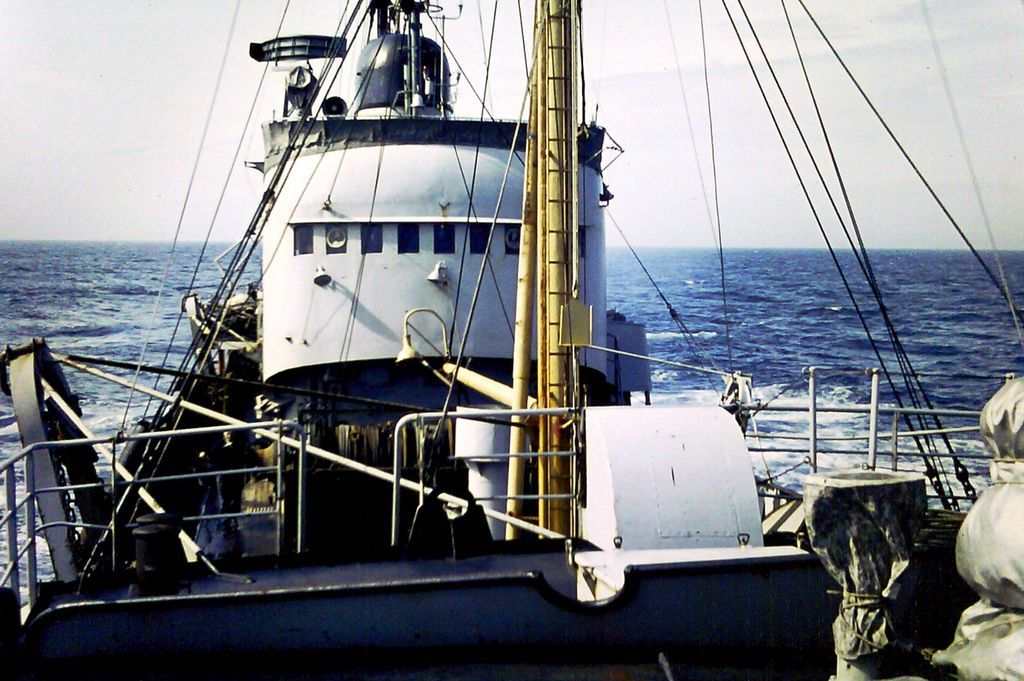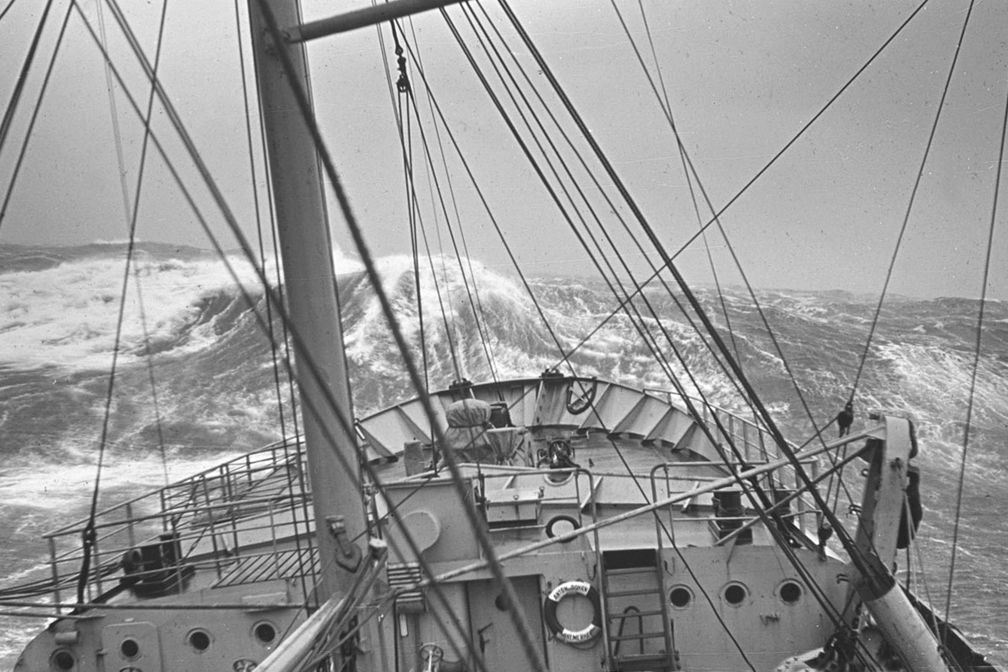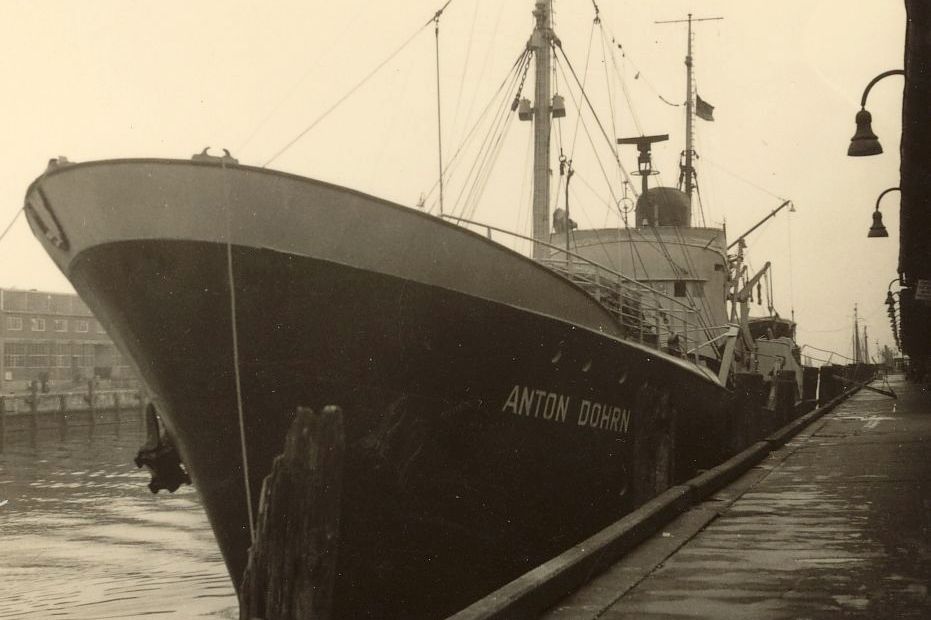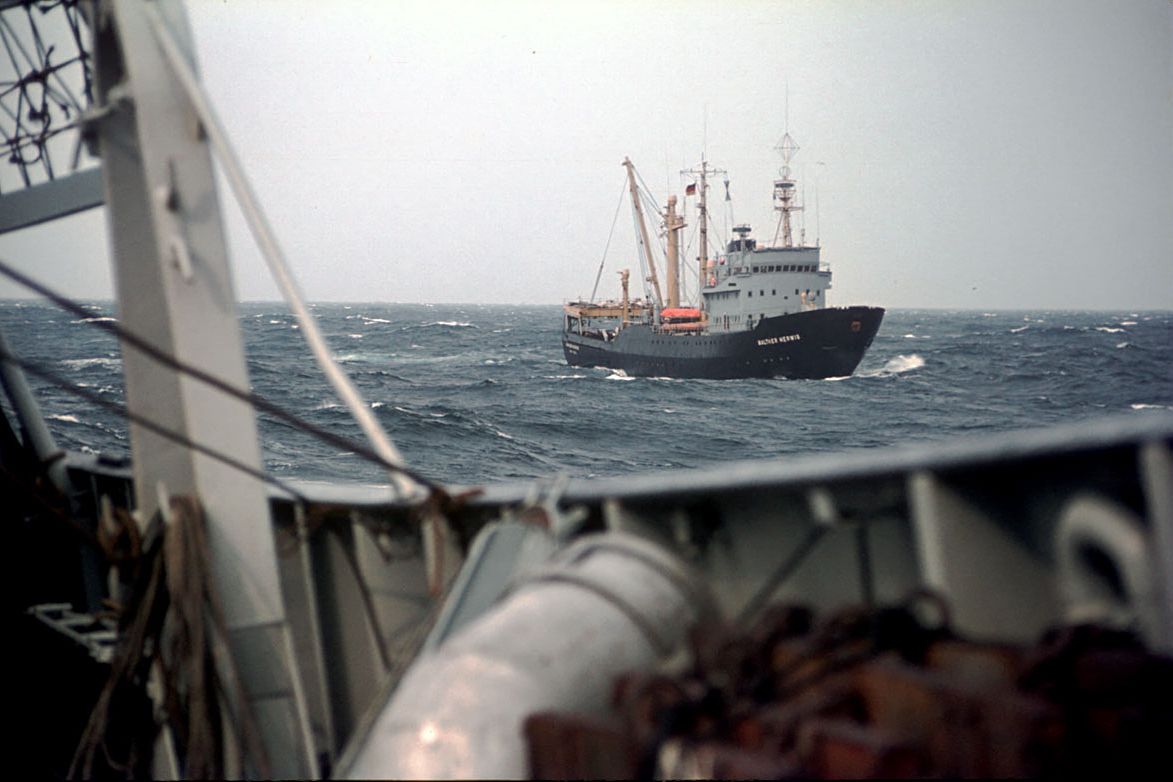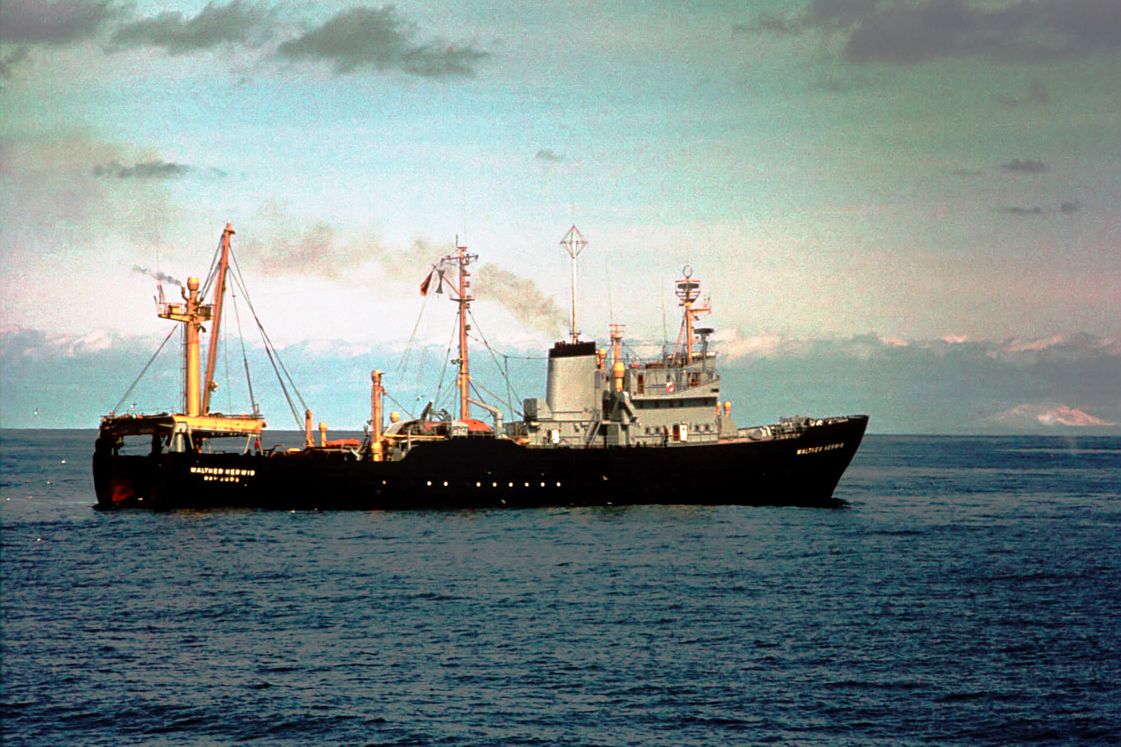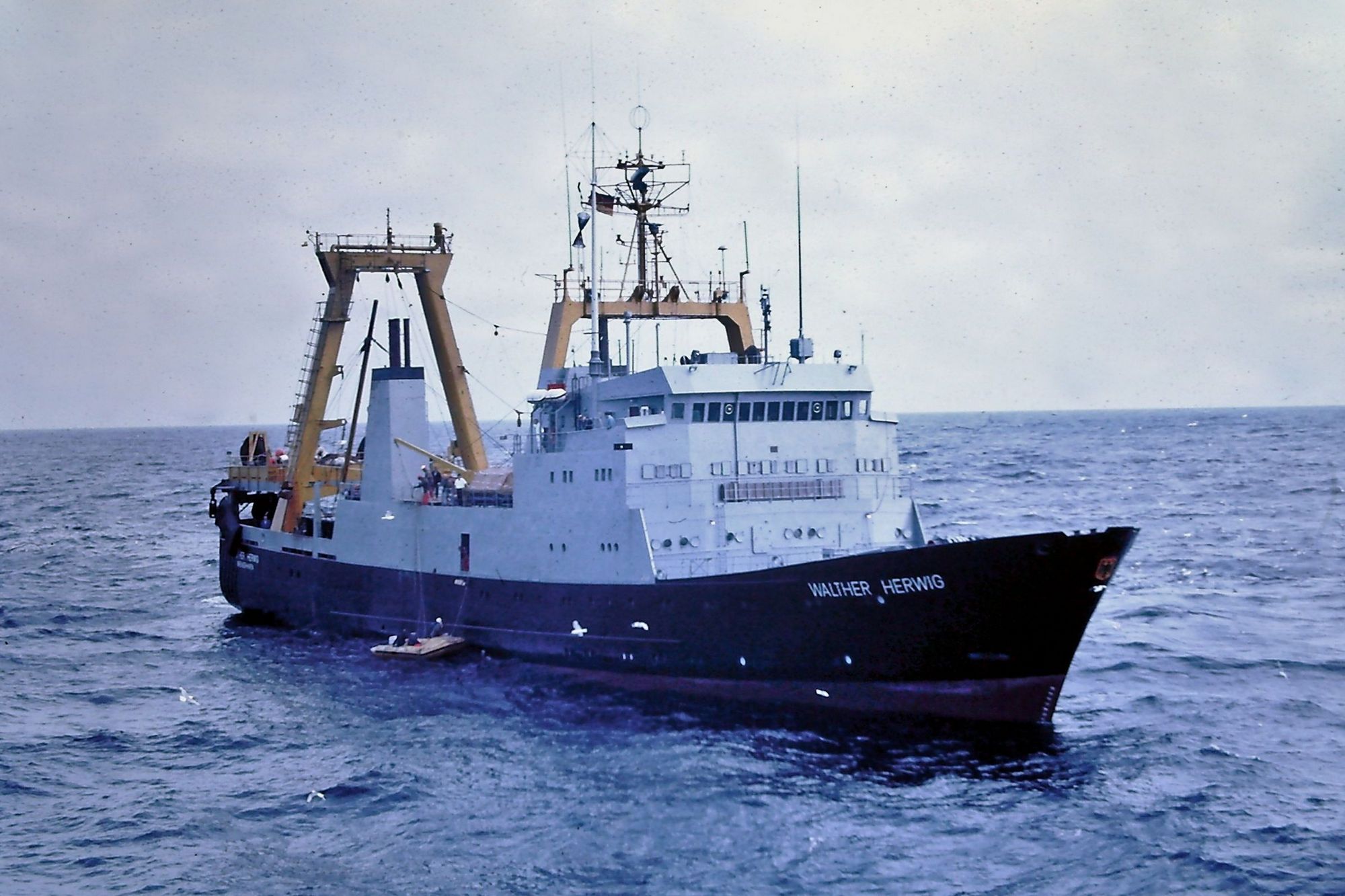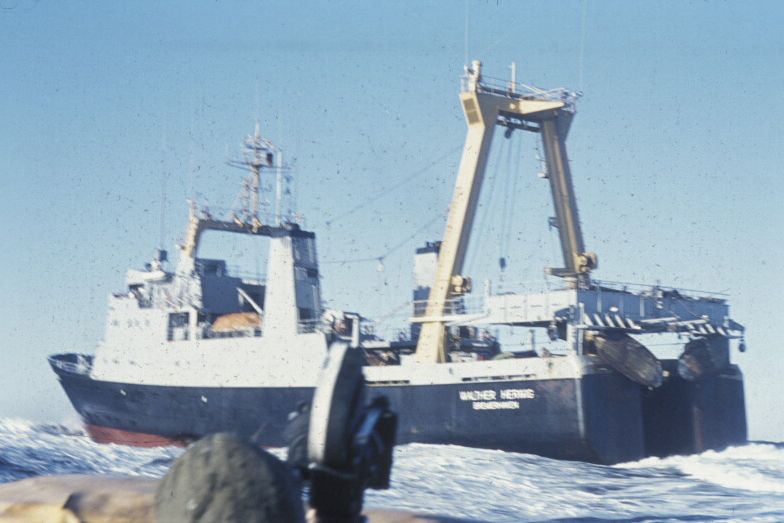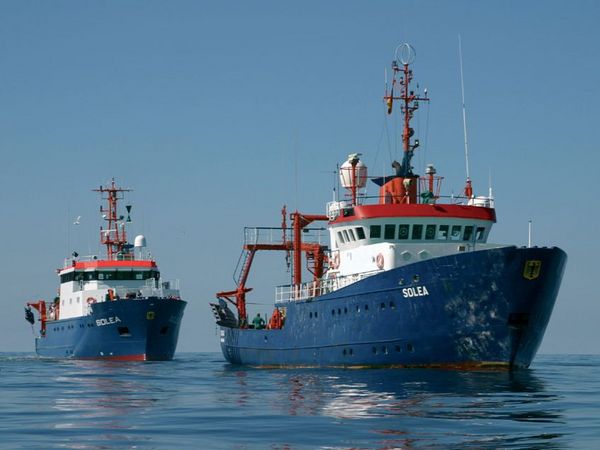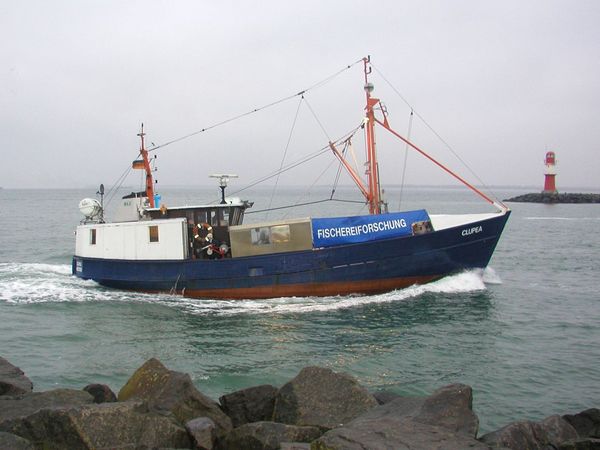History
A brief history of the German Fisheries Research Vessels
Michael Welling
Necessary tool for fisheries research, and also a "home away from home" for the crew and the scientists for decades: A brief history of the German Fisheries Research Vessels.
As the Roman numeral III in "Walther Herwig III" suggests, our present research vessels are not the first of their kind.
The first fisheries research vessel belonging to the young Federal Republic of Germany was the "Anton Dohrn". The steam-powered side trawler – 62,3 m in length and 10,2 m in width – was commissioned by the then President of the Federal Republic of Germany, Theodor Heuss, on 3 March 1955. Until 1972, the "Anton Dohrn" undertook 164 research cruises and covered more than 600,000 nautical miles (> 1,11 million km). She subsequently served another 14 years as a fishery protection vessel and was broken up in 1986. A special website presents the history and the scientific cruises of the "Anton Dohrn".
In 1963, the fisheries research vessel “Walther Herwig” was the next addition to West Germany’s fisheries research. This new, larger and modern stern trawler was renamed “Anton Dohrn” after the old “Anton Dohrn” was de-commissioned in 1972. In 1986, she, too, was de-commissioned and sold; she was broken up in 1993.
Commissioned in 1973, the second “Walther Herwig” undertook cruises to the North Sea, the Baltic, the Atlantic and the Antarctic Oceans for about 20 years.
In 1993, the present “Walther Herwig III” was commissioned. This research vessel regularly works in the North Sea, the Baltic and the waters off Greenland. She has also been twice to the Sargasso Sea, the nursery grounds of the eel. In the framework of international cooperation she participates in research into the marine ecosystem off West Africa.
The first research vessel named “Solea” was launched in 1973 and commissioned in 1974. With a length of 35.4 m, she was considerably smaller than the “Walther Herwig” and her cruises focussed mainly on the North Sea and the Baltic.
Whilst the German cutter fleet at the time largely consisted of side trawlers, “Solea” was already a modern stern trawler. After 20 years in service, she was replaced in 2004 by the present “Solea”, also a stern trawler. In contrast to the previous vessel, the special propeller installed in this ship reduces noise emissions.
The old vessel still exists: after being de-commissioned, she was sold, converted into a motor yacht, and now cruises under the same name in the Mediterranean Sea.
The pre-history of today’s “Clupea” started in 1949. During this year, a wooden side-trawler of 17.6 m length was built at the East German Bodden Shipyard. Named “Erfurt”, the vessel started life as a commercial fish cutter in the Baltic. In 1982, the ship was chartered by the former GDR Institute for High Sea Fisheries and Production Technology. She was bought by the institute in 1983, rebuilt as the research cutter “Clupea”, and remained in service until 2012. Due to its shallow draught, the research cutter could be used in the shallow coastal and Bodden sea waters.
In 2012, the cutter was replaced by the present “Clupea”. At 28.8 m in length, the new ship is considerably larger and provides much better working conditions. Like her predecessor, she has a shallow draught and is also able to work in the Bodden sea areas.
The old “Clupea” was sold. Today, more than 60 years after launching, she still cruises the Baltic, however under a new name.

